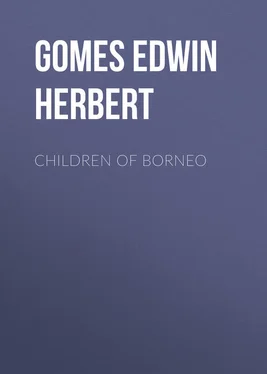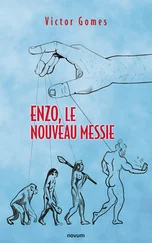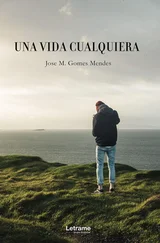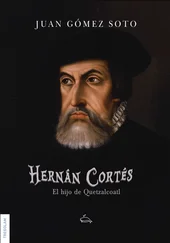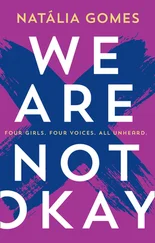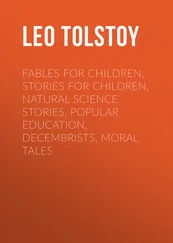Edwin Gomes - Children of Borneo
Здесь есть возможность читать онлайн «Edwin Gomes - Children of Borneo» — ознакомительный отрывок электронной книги совершенно бесплатно, а после прочтения отрывка купить полную версию. В некоторых случаях можно слушать аудио, скачать через торрент в формате fb2 и присутствует краткое содержание. Жанр: foreign_antique, foreign_prose, Путешествия и география, на английском языке. Описание произведения, (предисловие) а так же отзывы посетителей доступны на портале библиотеки ЛибКат.
- Название:Children of Borneo
- Автор:
- Жанр:
- Год:неизвестен
- ISBN:нет данных
- Рейтинг книги:5 / 5. Голосов: 1
-
Избранное:Добавить в избранное
- Отзывы:
-
Ваша оценка:
- 100
- 1
- 2
- 3
- 4
- 5
Children of Borneo: краткое содержание, описание и аннотация
Предлагаем к чтению аннотацию, описание, краткое содержание или предисловие (зависит от того, что написал сам автор книги «Children of Borneo»). Если вы не нашли необходимую информацию о книге — напишите в комментариях, мы постараемся отыскать её.
Children of Borneo — читать онлайн ознакомительный отрывок
Ниже представлен текст книги, разбитый по страницам. Система сохранения места последней прочитанной страницы, позволяет с удобством читать онлайн бесплатно книгу «Children of Borneo», без необходимости каждый раз заново искать на чём Вы остановились. Поставьте закладку, и сможете в любой момент перейти на страницу, на которой закончили чтение.
Интервал:
Закладка:
The entrance to this house is made by a notched trunk or log, which serves as a ladder; one is fixed at each end of the house. The length of the building varies according to the number of families inhabiting it, but as the rooms occupied by the different families are built on the same plan, the whole presents a uniform and regular appearance.
The long Dyak house is built in a straight line, and the walls and roof are thatched with dried palm leaves. There is a long uncovered verandah where the paddy 1 1 Paddy – rice in the husk.
is put out to be dried by the sun; afterwards it is pounded to get rid of its husk, and so converted into rice. Here, also, the clothes and a variety of other things are hung out to dry. The flooring of this part of the house is generally made of laths of hard wood, so as to stand exposure to the weather. The flooring of the rest of the house is made of split palm or bamboo tied down with rattan or cane.
Next to the long uncovered verandah comes the long open hall, or covered verandah, which stretches without any partition along the whole length of the house. It is a cool and pleasant place, and is much frequented by men and women for conversation and indoor pursuits. Here the women do their work – the weaving of cloth, or the plaiting of mats. Here, too, the men chop up the firewood used for cooking their food, and even make boats, if not of too great a size. This long hall is a public place open to all comers, and used as a road by travellers, who climb up the ladder at one end, walk through the whole length of the house, and go down the ladder at the other end. The floor is carpeted with thick and heavy mats made of cane, interlaced with narrow strips of beaten bark. Over these are spread other mats of finer texture, when necessary, for visitors to sit upon, for you must understand the Dyaks do not use chairs or forms, but always sit on the floor.
On one side of this long public hall is a row of doors. Each of these leads into a separate room, which is occupied by a family. This room serves several purposes. It serves as a kitchen, because in one corner there is a fireplace where the food is cooked. It also serves as a dining-room, because when the meal is ready, mats are spread here, and the inmates squat on the floor to eat their meal. It also serves as a bedroom, and at night the mats for sleeping are spread out, and here the inmates sleep.
Round three sides of the room – the fourth side being occupied by the fireplace – are ranged the treasured valuables of the Dyaks – old earthen jars, some of which are of great value, and brass gongs and guns. Their cups and plates are hung up in rows flat against the wall. The flooring of this room is the same as that of the public hall outside, and made of split palm or bamboo tied down with cane. The floor is swept after a fashion, the refuse falling through the flooring to the ground underneath. The room is stuffy and not such a pleasant place as the open hall outside. The pigs and poultry occupy the waste space under the house.
Each family has its own portion of the long public hall outside, and the length of this corresponds to the breadth of the room occupied by the family, and in each of these portions there is a small fireplace which consists of a slab of stone, at which the men warm themselves when they get up, as they usually do, in the chill of the early morning before the sun has risen.
Over this fireplace in the open hall hangs the most valuable ornament in the eyes of the Dyak, the bunch of human heads. These are the heads obtained when on the war-path by various members of the family – dead and living – and handed down from father to son as the most precious heirlooms – more precious, indeed, than the ancient jars which the Dyaks prize so highly.
The posts in this public part of the Dyak village house are often adorned with the horns of deer and the tusks of wild boar. The empty sheaths of swords are hung from these horns or from wooden hooks, while the naked blades are placed in racks overhead.
If you can imagine a long house built several feet above the ground on posts, with walls and roof of palm leaf thatch, and this house divided into two parts, one a large public hall common to all the inmates, and the other divided into separate rooms each occupied by a different family, then you have some idea of the kind of house in which the Dyaks live.
The women are earlier risers than the men, and retire to bed earlier. They generally go to the river as soon as they wake, carrying their water-gourds with them. They have a bath, fill their gourds with water, and return to the house to cook the morning meal.
The principal article of food is rice, which is cooked in brass or iron pots. With their rice they eat either vegetables or fish. Sometimes they have the flesh of wild pig or deer, but that is not usual. Nearly every animal is eaten by the Dyaks; fish, venison and pork are eaten by all, and many tribes eat monkeys, snakes and even crocodiles. A favourite method of cooking is to put the proper quantity of fish or vegetables or meat, with sufficient water and a little salt, into a newly-cut bamboo. The mouth is then stopped up with leaves, and the bamboo is placed over the fire, resting on a stone at an angle of forty-five degrees or more. By the time the bamboo is thoroughly charred, the contents are sufficiently cooked, and it is taken from the fire and emptied out into a plate. Sometimes rice is cooked in bamboos, and when it is ready to be eaten, the bamboo is split and torn off in strips, and the rice is found well cooked inside – a stiff mass moulded in the form of the bamboo.
When the food is ready and put out in plates, the men are asked to come into the room and eat. Sometimes the women eat with the men; but if there are too many to eat comfortably at one sitting, the men have their meal first, and the women eat with the children after the men have done.
The Dyaks all sit on the floor, which also serves as their table. They have their rice on plates, or sometimes upon clean leaves. They eat with their fingers, dipping the hand when necessary into the common stock of salt or common dish of meat or vegetables. They eat with the right hand, compressing the rice into portions of convenient size.
When the meal is over, they wash the crockery and put it away. The mats are swept and taken up, and the refuse thrown through the open floor for the pigs and poultry under the house to eat.
The floor of the Dyak house is clean enough because all the dirt falls through on to the ground underneath; consequently this is covered with rubbish, and perpetually wet from the water thrown down from the floor above, and, being the favourite resort of the pigs and fowls of the long Dyak house, often smells horribly.
CHAPTER IV
DYAK BABIES AND CHILDREN
A Dyak baby is much like any other baby in being a little helpless human thing that spends most of his time in sleeping and feeding, worrying its mother with its constant wants, but yet loved greatly by her, and as it grows up, making its parents proud of it, and amusing them by its cunning little ways. Its colour varies from a light brown with a tinge of yellow to a dark chocolate, and it wears no clothing at all until it is five or six years old.
Until a civilised government interfered to prevent such cruel murders, there used to be a custom among the Dyaks that if the mother died when her child was born, the poor babe should pay the penalty and be buried with the mother. The reasons given for this cruel act was that the child was the cause of the mother's death, and that there was no one to nurse and care for it. No woman would dare to nurse such an orphan, lest it should bring misfortune upon her own children. Therefore the poor child was often placed alive in the coffin with the dead mother, and both were buried together. That was the old cruel Dyak custom, but I am glad to say it is a long time since it has been carried out. I have myself known many cases among the Dyaks where the mother has died, and the orphan has been adopted and brought up by some friend or relative.
Читать дальшеИнтервал:
Закладка:
Похожие книги на «Children of Borneo»
Представляем Вашему вниманию похожие книги на «Children of Borneo» списком для выбора. Мы отобрали схожую по названию и смыслу литературу в надежде предоставить читателям больше вариантов отыскать новые, интересные, ещё непрочитанные произведения.
Обсуждение, отзывы о книге «Children of Borneo» и просто собственные мнения читателей. Оставьте ваши комментарии, напишите, что Вы думаете о произведении, его смысле или главных героях. Укажите что конкретно понравилось, а что нет, и почему Вы так считаете.
